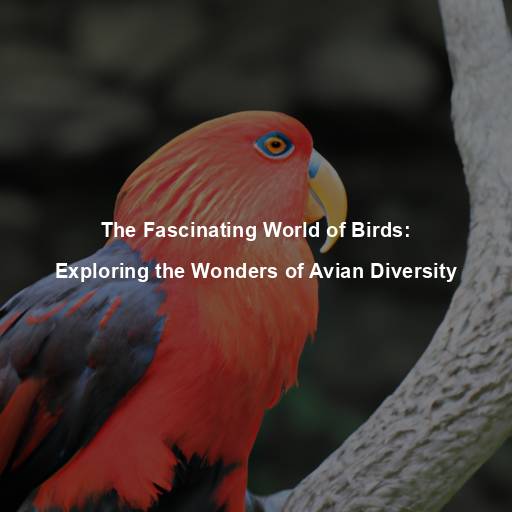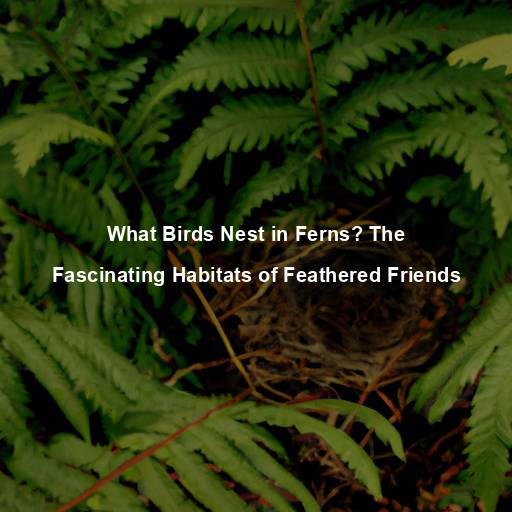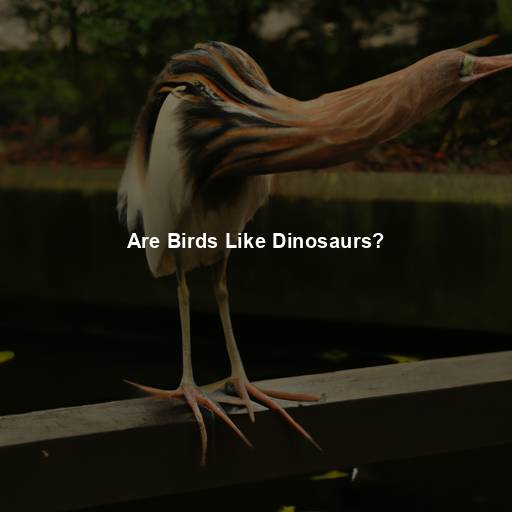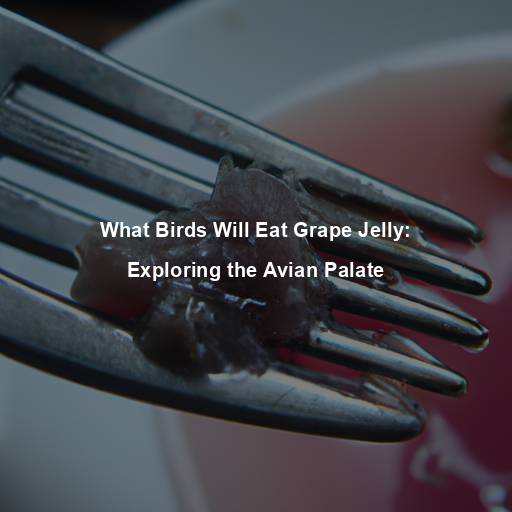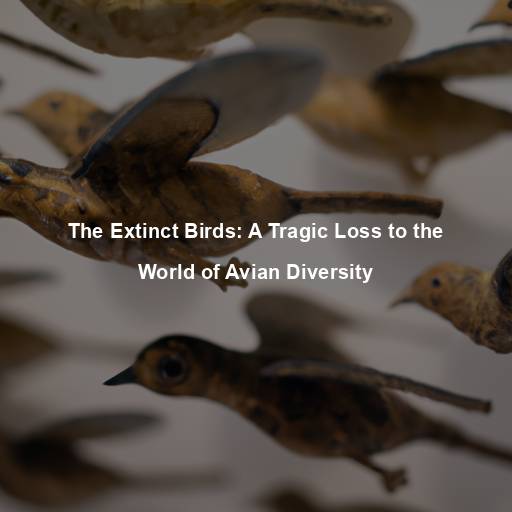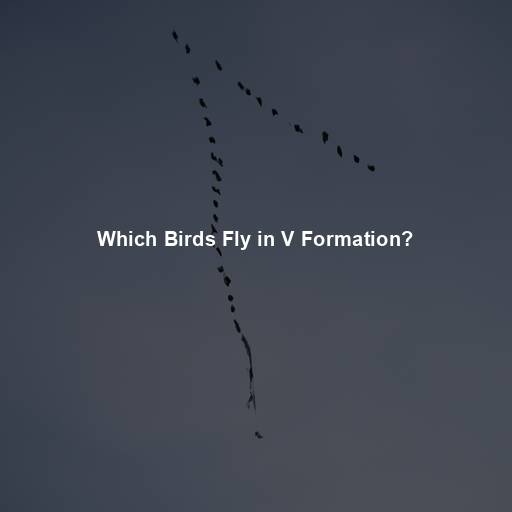The Fascinating World of Birds: Exploring the Wonders of Avian Diversity
Last Updated on November 6, 2023 by Evan
Contents [hide]
- 1 Understanding the Avian Kingdom
- 1.1 A Glimpse into the Origins of Birds
- 1.2 The Marvel of Feathers: More Than Just Decoration
- 1.3 Behaviors of the Feathered Kind
- 1.4 The Symphony of Birdsong
- 1.5 From Hummingbirds to Ostriches: A World of Avian Diversity
- 1.6 Birds as Indicators of Environmental Health
- 1.7 The Human-Bird Connection: A Bond Worth Celebrating
- 2 Celebrating Avian Wonder
- 2.1 The Ecological Significance of Birds
- 2.2 Birds as Pest Controllers
- 2.3 Indicator Species for Environmental Changes
- 2.4 Threats to Avian Survival
- 2.5 Conservation Efforts: Safeguarding Avian Diversity
- 2.6 Citizen Science: Engaging the Community
- 2.7 The Economic Value of Birds
- 2.8 The Resilience and Wonder of Birds
- 3 Embrace the World of Birds: A Call to Action
- 4 FAQs – How Birds Are in the World
- 4.1 How many species of birds are there in the world?
- 4.2 Where can you find birds?
- 4.3 How do birds reproduce?
- 4.4 How do birds communicate with each other?
- 4.5 How do birds migrate?
- 4.6 What do birds eat?
- 4.7 How long do birds live?
- 4.8 Do all birds fly?
- 4.9 How do birds adapt to their environments?
- 4.10 Can birds recognize themselves in the mirror?
Understanding the Avian Kingdom
Throughout the ages, the mesmerizing charm of birds has captivated humanity, as we stand in awe of their ethereal flights, resplendent feathers, and melodic serenades. From the awe-inspiring grandeur of eagles spreading their wings to the dainty hovering of hummingbirds, these extraordinary creatures have firmly entrenched themselves in the tapestry of nature. With an astonishing array of more than 10,000 unique species inhabiting every corner of the globe, birds offer an astounding display of diversity that continues to perplex and enchant researchers and enthusiasts alike. In this all-encompassing exploration, we embark on a journey to unravel the astonishing traits, behaviors, and habitats of these feathered wonders, shedding light on their indispensable role and the marvels they bestow upon our precious planet.
A Glimpse into the Origins of Birds
Have you ever wondered about the fascinating world of birds? These enchanting creatures, part of the remarkable class Aves, emerged from a distant past, intertwining their evolutionary path with that of reptiles over 150 million years ago. Through their journey, they developed extraordinary features that set them apart, such as the exquisite plumage of feathers, the versatile beaks that aid in their quest for sustenance, and a skeletal structure so wonderfully lightweight. One can’t help but be captivated by their innate ability to take flight, which allows them to conquer vast distances and wander through the most diverse and puzzling ecosystems.
The Marvel of Feathers: More Than Just Decoration
Feathers, those mesmerizing adornments that make birds stand out in a crowd, are not just a pretty sight. These marvels of evolution have a range of functions that keep our feathered friends at the top of their game. Initially evolved from reptilian scales, feathers act as nature’s insulation, helping birds keep that perfect body temperature locked in. However, their mighty role doesn’t stop there – with their unique structure, feathers provide the necessary lift and minimize air resistance that enables birds to take flight and glide effortlessly through vast skies.
Behaviors of the Feathered Kind
Birds, those captivating creatures of the sky, never cease to amaze us with their peculiar habits and perplexing ways. One such phenomenon is migration, a grand adventure that unfolds every year as winged wanderers embark on a journey that spans the vastness of thousands of miles. How do they navigate this labyrinth of uncertainty? It’s a question that fills the air with wonder and intrigue.
The Symphony of Birdsong
Few sounds rival the enchanting melodies produced by birds. From the melodious warbling of nightingales to the haunting calls of loons echoing across serene lakes, bird songs have captivated humans for centuries. The purpose of these vocalizations varies, ranging from territorial defense and mate attraction to communication within flocks. Exquisite vocal abilities are not limited to just a few species; rather, birds from all corners of the world have evolved unique songs that reflect their habitat, behavior, and social structure.
From Hummingbirds to Ostriches: A World of Avian Diversity
The avian kingdom encompasses an astounding range of species, each with its own set of adaptations and characteristics. From the smallest bird, the bee hummingbird, weighing a mere two grams, to the towering ostrich, capable of reaching heights of up to nine feet, avian diversity astounds us at every turn. Birds have evolved adaptations that suit their specific ecological niches, allowing them to thrive in diverse habitats. Whether it be the webbed feet of waterfowl, the hooked beaks of birds of prey, or the elongated bills of nectar-feeding species, each adaptation is finely tuned to ensure survival in their respective environments.
Birds as Indicators of Environmental Health
Birds are so much more than just pretty creatures fluttering about. In fact, they hold a mysterious power as tiny environmental detectives, continuously sniffing out our planet’s well-being. With their incredible knack for detecting change, be it in habitat quality, climate patterns, or pollution levels, these avian superheroes provide us with early glimpses into looming ecological imbalances caused by human activities. By keeping a watchful eye on the ups and downs of bird populations, our brilliant scientists can uncover invaluable insights into the overall health of our fragile ecosystems and devise cunning conservation strategies to safeguard the precious tapestry of biodiversity.
The Human-Bird Connection: A Bond Worth Celebrating
Birds have enchanted humanity since time immemorial, captivating our imaginations with their ethereal allure and mystique. From ancient legends and folklore to celebrated works of art, these magnificent creatures have soared through the annals of human creativity, symbolizing a myriad of emotions and concepts. But the significance of birds extends beyond mere symbolism; they have been utilitarian allies as well, aiding us in communication and assisting in our primal pursuits. In our modern era, birds continue to enchant us as cherished companions, creating unbreakable bonds between humans and feathered friends.
Celebrating Avian Wonder
As we delve into the enigmatic realm of avian wonders, we are astounded by the intricate tapestry of life that envelops us. The mesmerizing world of birds, with its remarkable adaptations, captivating behaviors, and melodious choruses, serves as a poignant reminder of the immeasurable splendor and tenacity of the natural world. By fostering a deep sense of reverence and comprehension for these extraordinary beings, we join forces in safeguarding their existence and preserving the delicate harmony of our shared planet. Let us embark on this awe-inspiring journey, where each graceful wingbeat and every dulcet chirp are etched immeasurably within our souls.
The Ecological Significance of Birds
Birds play a crucial role in maintaining the delicate balance of ecosystems. As seed dispersers, they contribute to the regeneration and diversity of plant species. By consuming fruits and berries and subsequently excreting the seeds in different locations, birds aid in the dispersal of plants, ensuring their survival and facilitating the colonization of new areas. Additionally, certain bird species act as pollinators, transferring pollen from flower to flower as they feed on nectar.
Birds as Pest Controllers
In agricultural landscapes, birds serve as natural pest controllers, preying on insects and small mammals that can cause significant damage to crops. By consuming pests such as caterpillars, aphids, and rodents, birds help to regulate populations and minimize the need for chemical pesticides. Encouraging the presence of bird species that act as biological control agents can provide effective and sustainable pest management solutions, benefiting both farmers and the environment.
Indicator Species for Environmental Changes
Birds, these remarkably perceptive creatures, hold within them a remarkable ability to sense and respond to the ever-changing world around them. In this vast symphony of nature, their movements, habitats, and even their very ability to reproduce serve as a barometer of the health and well-being of our ecosystems. Their songs, among the most eloquent and enthralling, whisper tales of both hope and despair, offering us crucial insight into the impacts of human intervention on the delicate balance of nature. Guided by the wisdom of these avian ambassadors, scientists and conservationists shoulder the weighty responsibility of monitoring their populations, watching for telltale signs of habitat degradation, climate upheaval, and the insidious creep of pollution.
Threats to Avian Survival
Birds, with all their incredible abilities to adapt and endure, are grappling with a myriad of perplexing obstacles that cast a shadow over their very existence. The encroaching urbanization, deforestation, and relentless agricultural practices have conspired to snatch away their habitats, leaving them vulnerable to the brink of oblivion. The fragmentation of these once-thriving sanctuaries curtails their access to vital sustenance, safe havens for breeding, and well-trodden migration routes, plunging their populations into a turbulent nosedive, where predation and disease lurk at every turn. As if their plight wasn’t burdened enough, climate change swoops in to intensify the chaos, reshaping ecosystems and disrupting the age-old rhythms of their majestic migrations.
Conservation Efforts: Safeguarding Avian Diversity
Protecting birds and their habitats is crucial for maintaining the rich tapestry of avian life and ensuring the health of ecosystems. By preserving vital areas like wetlands, forests, and grasslands, we can safeguard the resources that birds depend on. Embracing sustainable land-use practices and reducing harmful pesticides can contribute to the creation of environments that welcome our feathered friends. Additionally, educating and engaging communities in the importance of bird conservation can inspire a sense of responsibility and empower individuals to make a positive impact.
Citizen Science: Engaging the Community
Citizen science projects have emerged as a powerful tool for engaging the public in avian research and conservation. These initiatives involve volunteers in data collection, monitoring, and research efforts, enabling scientists to gather vast amounts of information across large geographic areas. By participating in bird surveys, nest box monitoring, and bird banding programs, individuals contribute to our understanding of bird populations, distribution patterns, and migration routes. Citizen science not only generates valuable data but also fosters a sense of connection between people and the natural world, inspiring a deeper appreciation for birds and their conservation.
The Economic Value of Birds
Beyond their ecological importance, birds also provide significant economic benefits. Birdwatching tourism, or avitourism, has become a thriving industry, attracting millions of enthusiasts worldwide. Birdwatchers travel to various destinations, contributing to local economies through accommodation, transportation, and the purchase of birding equipment. This economic incentive provides an additional motivation for conserving habitats and protecting bird populations, highlighting the interconnectedness between conservation efforts and sustainable development.
The Resilience and Wonder of Birds
Birds symbolize resilience, adaptability, and the enduring spirit of nature. Their ability to navigate vast distances, overcome challenging environments, and recover from population declines demonstrates their remarkable capacity for survival. As we face the complex environmental challenges of the modern world, birds serve as a reminder of the interconnectedness of all life forms and the importance of preserving biodiversity. By appreciating the wonders of avian diversity and taking collective action, we can ensure a future where birds continue to grace our skies, enchant our senses, and inspire generations to come.
Embrace the World of Birds: A Call to Action
Birds, with their captivating beauty and their vital ecological roles, deserve our attention and protection. As individuals, we can make a difference by taking simple yet meaningful actions to support avian conservation:
Create Bird-Friendly Spaces
Create a mesmerizing sanctuary for our feathered friends in the comfort of your own outdoor oasis. Embrace the spontaneous beauty of nature by cultivating an inviting space abundant with nourishment, hydration, and solace. Unveil the secret enchantment of local avian inhabitants by sowing native flora that captivates their hearts, providing a fertile ground for nesting and sustenance. Elevate the allure of your haven with carefully crafted bird feeders, artfully designed birdbaths, and charming birdhouses that evoke a sense of tranquility and security in their delicate dwellings.
Reduce Pesticide Use
In the realm of outdoor sanctuaries, where gardens and lawns bloom with life, it is vital to tread lightly and mitigate the utilization of chemical pesticides that can unsympathetically harm the delicate harmony shared by avian creatures and other wildlife. Unearth the realm of organic and natural pest control remedies, enabling the preservation of a thriving ecosystem that dances to the rhythm of nature’s profound symphony.
Support Conservation Organizations
Donate your time, resources, or funds to local or international conservation organizations that work tirelessly to protect and conserve bird populations and their habitats. Participate in volunteer programs, contribute to citizen science initiatives, or join advocacy campaigns to raise awareness about bird conservation.
Engage in Responsible Tourism
As globetrotters, it’s crucial to weave our wanderlust with an unwavering commitment to ecological preservation. Embrace the awe-inspiring world of avian wonders by embarking on journeys that celebrate the delicate dance between our feathered friends and their fragile habitats. Let’s forge a profound connection with Mother Nature as we support local communities whose very livelihoods rely on the enchanting allure of birdwatching, all while adhering to ethical guidelines that safeguard these graceful creatures.
Spread the Word
Discover the enchanting world of our feathered friends and delve into the captivating realm of bird conservation. Unleash your inner bird enthusiast and unleash a flurry of knowledge, experiences, and passion through the power of social media, community events, or educational outreach programs. Ignite the spark that will inspire others to cherish and safeguard the awe-inspiring array of avian wonders that grace our skies.
As we immerse ourselves in the fascinating realm of avian wonders, a sense of collective responsibility beckons us to safeguard their precious habitats. By joining forces to preserve these enchanting creatures, we pave the way for a harmonious coexistence where the skies remain adorned with their breathtaking flight displays, continually inspiring and captivating us. Let us rejoice in the splendor of these magnificent beings and work tirelessly to carve a future where their untamed beauty continues to enrich our lives.
FAQs – How Birds Are in the World
How many species of birds are there in the world?
In the ever-evolving realm of avian wonders, a staggering 10,000 unique species of birds gracefully adorn our planet. As if the skies were a canvas for nature’s artistic brilliance, this number continues to enthrall as new discoveries unfold, pushing the limits of our understanding. Through the lens of scientific research and the leaps of technological prowess, the tapestry of avian taxonomy delicately weaves a tale of constant refinement and perplexing diversity.
Where can you find birds?
Birds are fascinating creatures that have managed to carve out a niche for themselves in almost every nook and cranny of our vast planet. From lush forests to arid deserts, from expansive grasslands to towering mountains, and from serene wetlands to bustling urban areas, these feathered wonders can be found gracing every imaginable ecosystem. But what determines where exactly they choose to hang their nests? Well, it turns out that factors like climate, the availability of food, and the suitability of their habitats play a pivotal role in shaping the distribution of bird species across the globe. It’s truly a marvel to witness the perplexing and unpredictable patterns that emerge when we delve into the world of our avian companions!
How do birds reproduce?
The world of bird reproduction is a fascinating blend of enchantment and complexity. Within their majestic realm, males possess the wondrous testes, orchestrating the symphony of life as they diligently compose and dispatch their vibrant sperm. Females, on the other hand, possess a pair of remarkable ovaries that function as prodigious ovum factories, generating the potential for new beginnings. With a captivating dance of mates, the male transfers his precious offering into the female’s mysterious cloaca, a captivating portal of connection. Guided by an enigma of nature’s design, the fertilization takes place within the hidden depths, shrouded in wonderment, eventually leading to the female’s artistry in nurturing the precious, now-fertilized eggs until their much-anticipated hatching.
How do birds communicate with each other?
In the mesmerizing world of avian existence, birds possess a mesmerizing repertoire of vocalizations that encompasses calls, songs, and captivating displays. These enchanting sounds serve as a means for avian communication, enabling them to express a myriad of messages like courtship entreaties, territorial defense proclamations, urgent warnings, or simply to keep in touch with their feathered comrades. Each species boasts its own unique sonic signatures, which emerge as vital keys to unravel the secrets of bird identification and unravel the intricacies of their captivating behaviors.
How do birds migrate?
The natural world never ceases to amaze us with its wondrous displays of adaptability. Take, for instance, the awe-inspiring phenomenon of migration among avian species. These remarkable creatures embark on epic journeys, traversing vast distances in search of greener pastures or bountiful feeding grounds. What makes their feat even more mystifying is their ability to navigate through unfamiliar terrains, relying on a mysterious blend of visual cues, magnetic forces, and the enigmatic guidance of the stars above. With wings spread wide, they soar to unimaginable heights, conquering the skies and covering thousands of miles in their quest for survival.
What do birds eat?
The diverse gustatory inclinations of birds never cease to bewilder and amaze. Whether it be the herbivorous avian connoisseurs, who savor the succulent sweetness of seeds, fruits, or the intoxicating allure of nectar, or the cunning carnivores, relying on their razor-sharp instincts to feast upon unsuspecting insects, worms, and occasionally, small mammals. And of course, nestled amidst this palatable paradox is the enigmatic omnivorous bird, a culinary artist that indulges in the delicate fusion of both plant and animal matter. It is through the ornate tapestry of their beak shapes, adaptively designed to suit their particular gastronomic desires, that these feathered gastronomes find their nourishment amidst a world of perplexing culinary choices.
How long do birds live?
The lifespan of birds varies greatly among species. Smaller birds tend to have shorter lifespans, typically ranging from a few years up to a decade. Larger species can have much longer lives, with some parrots and seabirds living for several decades or even longer. Factors such as habitat, predation, disease, and availability of food can also influence the longevity of birds.
Do all birds fly?
In the enchanting world of birds, the marvel of flight is not a birthright bestowed upon every feathered creature. Nature, ever the capricious artist, has gifted certain avian beings with terrestrial prowess, defying the skies that beckon their brethren. Penguins, with their slick tuxedos, glide through the icy depths with wings refined for the aquatic realm, while the giants among them, like the ostriches, embody grace on land, leaving the heavens to others. And yet, amidst this kaleidoscope of aviary wonder, we encounter the paradoxical existence of chickens and turkeys, whose once majestic wings have been tamed by the shaping hands of selective breeding, confining their aeronautical dreams to mere whispers of a distant memory.
How do birds adapt to their environments?
Birds possess an astonishing array of adaptations that effortlessly propel them through diverse environments, leaving us awestruck and perplexed. From their captivating beaks, exquisitely crafted for extracting sustenance, to their graceful feet, masterfully engineered for securing footholds in the most peculiar places, these feathered marvels defy convention. But it doesn’t end there – their plumage boasts a symphony of hues, each strand intricately woven for insulation, allure, or combat. And as if this weren’t enough to stir our curiosity, their finely tuned senses, honed to perfection, allow them to boldly navigate the realm of predators and prey. Let us not forget their remarkable ability to regulate body temperature, permitting them to conquer climates both scorching and frigid. Nature’s artisans, birds embody the very essence of enigmatic adaptability.
Can birds recognize themselves in the mirror?
It’s no secret that some birds are incredibly smart cookies. Take parrots and corvids, for example – these feathered geniuses have been known to ace mirror tests and recognize themselves. But let’s not forget about the rest of the avian crew, who might not be as selfie-savvy. While mirror recognition requires some serious brainpower and self-awareness, it’s not something that comes naturally to most birds. Instead, our feathered friends specialize in other awe-inspiring talents like socializing and communicating within their own flock.

